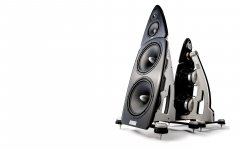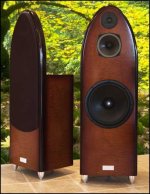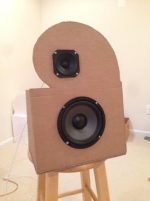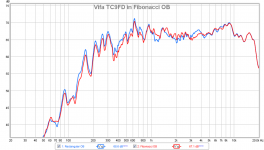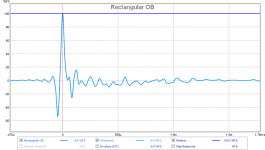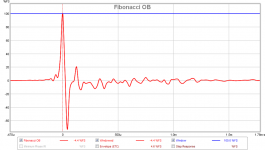As one of the other posters noted, the diffraction artifacts are going to be monotonically smooth
Yes, as I stated before, this project born around this idea, spread out gently the diffraction peak on a broad range of frequency
However, aside from personal taste and/or eventual placebo, I would like to know how this solution perform in term of measured FR
and the spiral was the most neutral of the set
Hi,
I'm not arguing it would not be. I'm basically arguing that it has
consequences that limit your technical options and other ways
with electrical correction via the crossover are less limited.
rgds, sreten.
Last edited:
Or, move away from single-driver so that you can actually operate with the passband under the dipole peak.Hi,
I'm not arguing it would not be. I'm basically arguing that it has
consequences that limit your technical options and other ways
with electrical correction via the crossover are less limited.
rgds, sreten.
This is not an exotic, this thread belongs in full range
sorry, was my fault, I've posted in the wrong section, don't know how to move
As far as the spiral baffle goes, I'd be surprised if that full range driver is painting that baffle edge at anything above 2kHz or so....
When I've started experimenting with OB, I was leaning toward narrow baffle, in the shape of pointed arch, something like this
Imaging and soundstage focus were great but the sound was too mids-upper mids; however I didn't tried to move forward the XO point for the woofer, maybe I'd have got interesting results
I see many Diyers using similar shapes and narrow baffles, so the formula must be good I guess, and I'm tempted to build another one
Attachments
Last edited:
Measurements of Fibonacci OB vs Rectangular OB
I took my OB from this thread as a test case with the Vifa TC9FD: http://www.diyaudio.com/forums/full-range/249984-cheap-fast-ob-literally.html
Here is the original speaker:
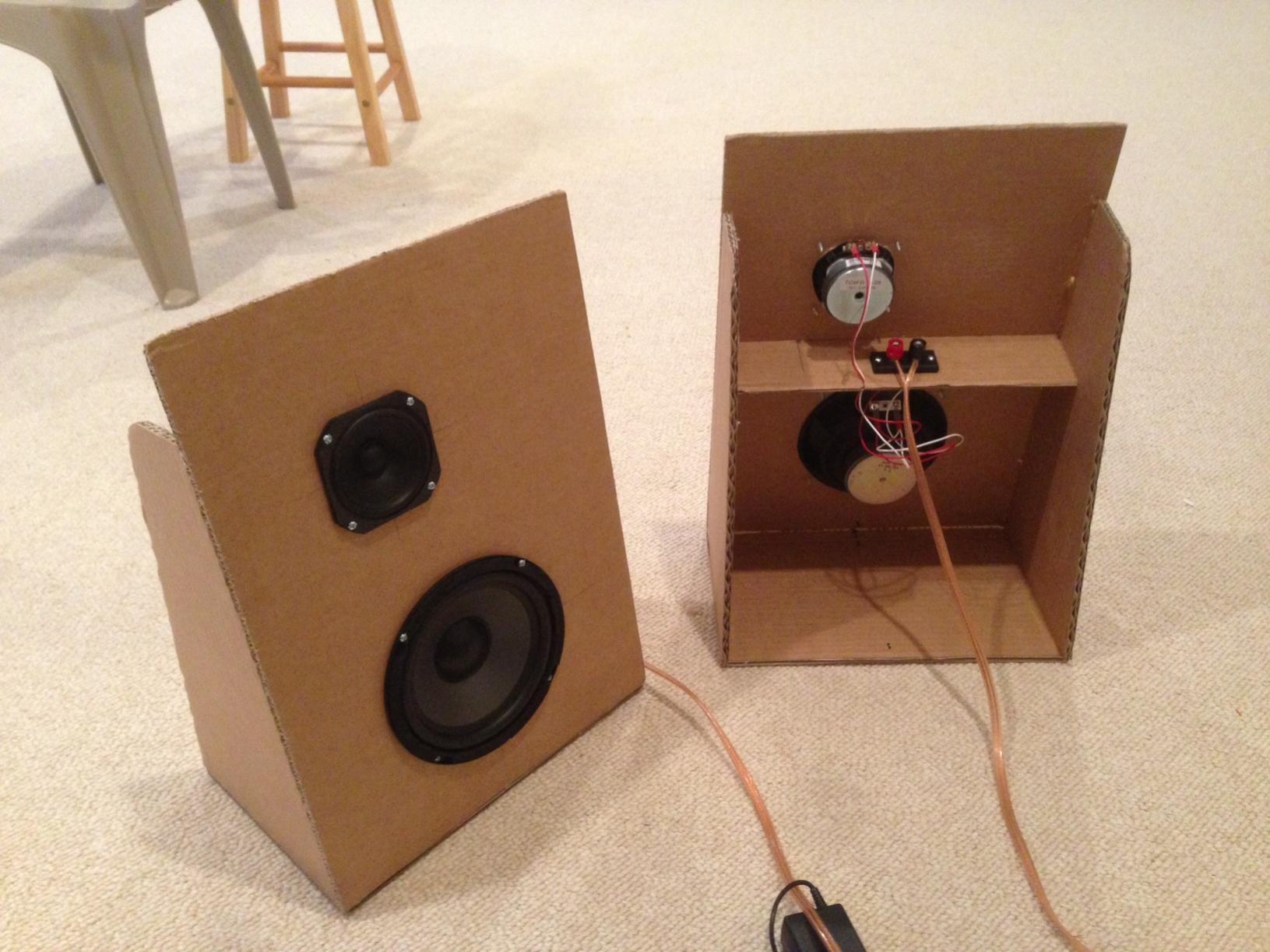
I then proceeded to modify it to look like this:
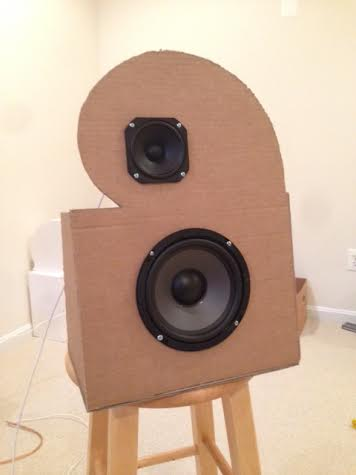
I measured the frequency response on axis at 1 meter away using a calibrated UMM-6 mic and REW software before I cut the cardboard. The I cut the baffle as prescribed by a rough hand sketch of the Fibonacci spiral. Being careful to replace the speaker exactly to the same measurement location as before, I measured the response after.
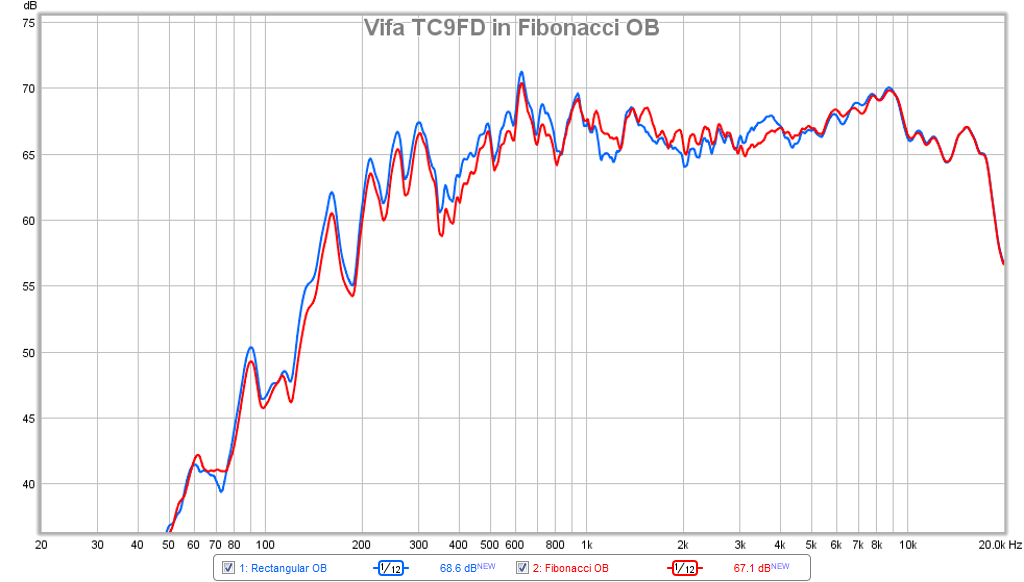
Here is a comparison of the frequency response before (blue) and after (red). The bass extension decreased slightly as expected but not much, which is good because there is still plenty of room to XO with woofer around 250 Hz to 350 Hz. There is a reduction in the dip at 1.16kHz and reduction in the peak at 3.64kHz by about 1 dB which is not much. The frequency response could be called slightly smoother looking I suppose.
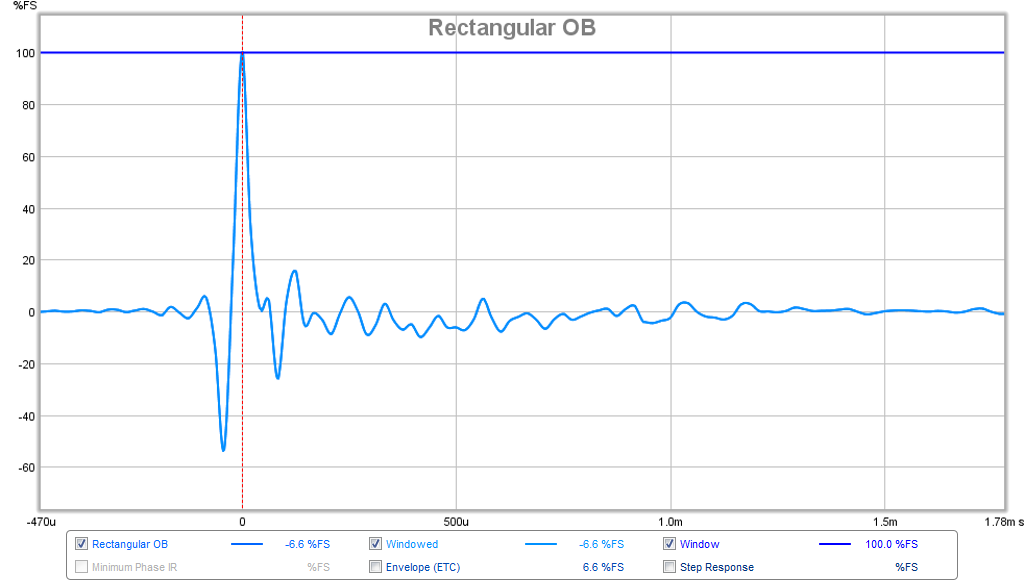
The more visible change is apparent when you look at the impulse response which I think is better. It used to have a mild pre-ring followed by a major peak, now with the Fibonacci, it simply goes up to to a peak and has a large overshoot down and settles. I think this will translate to cleaner sounding dynamics for delicate percussion like piano, wire snare drums, high hat, bells, etc.
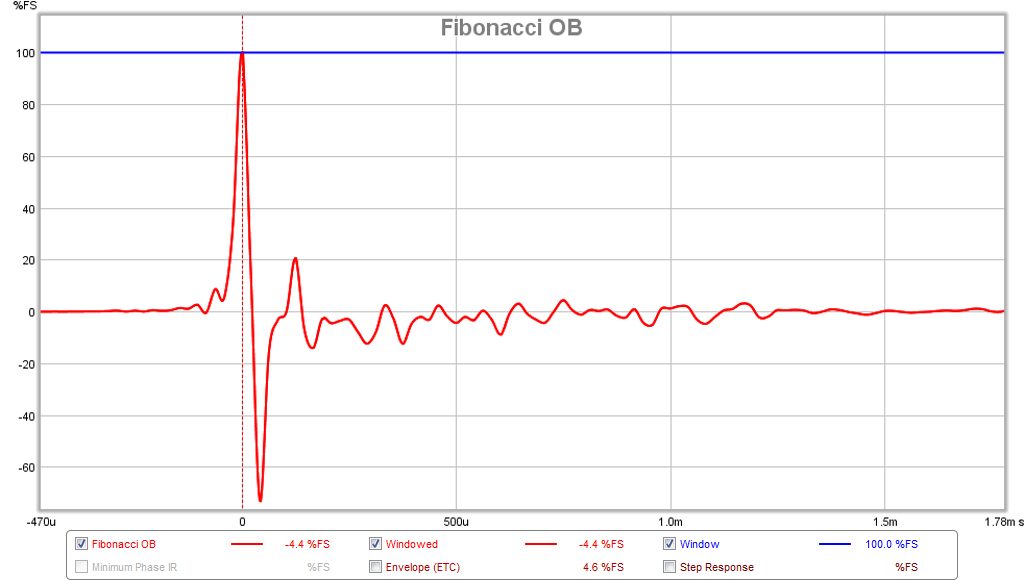
I did not get a chance to measure off axis or look at imaging as I only had time to do one. I would imagine imaging will be improved with a smaller baffle width.
Anyhow, there is a measurable effect and I think it is a good thing not to have any edge distances the same to reduce diffraction effects.
I took my OB from this thread as a test case with the Vifa TC9FD: http://www.diyaudio.com/forums/full-range/249984-cheap-fast-ob-literally.html
Here is the original speaker:

I then proceeded to modify it to look like this:

I measured the frequency response on axis at 1 meter away using a calibrated UMM-6 mic and REW software before I cut the cardboard. The I cut the baffle as prescribed by a rough hand sketch of the Fibonacci spiral. Being careful to replace the speaker exactly to the same measurement location as before, I measured the response after.

Here is a comparison of the frequency response before (blue) and after (red). The bass extension decreased slightly as expected but not much, which is good because there is still plenty of room to XO with woofer around 250 Hz to 350 Hz. There is a reduction in the dip at 1.16kHz and reduction in the peak at 3.64kHz by about 1 dB which is not much. The frequency response could be called slightly smoother looking I suppose.

The more visible change is apparent when you look at the impulse response which I think is better. It used to have a mild pre-ring followed by a major peak, now with the Fibonacci, it simply goes up to to a peak and has a large overshoot down and settles. I think this will translate to cleaner sounding dynamics for delicate percussion like piano, wire snare drums, high hat, bells, etc.

I did not get a chance to measure off axis or look at imaging as I only had time to do one. I would imagine imaging will be improved with a smaller baffle width.
Anyhow, there is a measurable effect and I think it is a good thing not to have any edge distances the same to reduce diffraction effects.
Attachments
Good job!!!
I'm very delighted to see how they actually perform based on objective real data, thank you so much to have provided this measurement, very nice
In your first test article, the driver was placed at distance from left, top and right edge in the fibonacci sequence, the spiral is just a refinement, that's why data are similar.
I can't provide any scientific support to my idea about the Fibonacci sequence, it was just an experiment, but in the end it seems not so flawed I guess
I'm very delighted to see how they actually perform based on objective real data, thank you so much to have provided this measurement, very nice
In your first test article, the driver was placed at distance from left, top and right edge in the fibonacci sequence, the spiral is just a refinement, that's why data are similar.
I can't provide any scientific support to my idea about the Fibonacci sequence, it was just an experiment, but in the end it seems not so flawed I guess
baffle vibration affect the sound
Maybe a sand filled baffle (SFB) like was done in the 1960's OB designs? Or constrained damping layer like soft rubber sheet sandwiched between two plywood panels or even aluminum or steel panels.
In your first test article, the driver was placed at distance from left, top and right edge in the fibonacci sequence, the spiral is just a refinement, that's why data are similar.
I guess I got lucky with offsetting the driver by 4.5 in from side edge and 5 inch from top!
I'm very delighted to see how they actually perform based on objective real data, thank you so much to have provided this measurement, very nice
You are welcome. It was informative for me too.
Btw, for comparison, this is what the TC9FD can do in a good sealed cabinet like the Nautaloss.
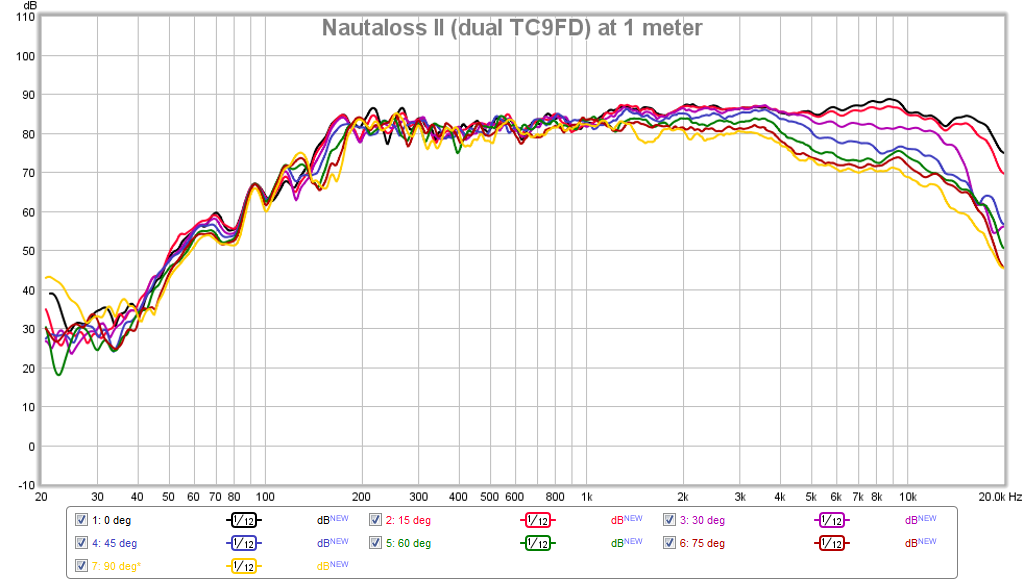
Last edited:
The $12 Vifa TC9FD, IMO is the best (at any price) full range driver for smooth response and uniform directivity for 200 Hz to 18 kHz, if you don't mind 85 dB at 2.83v sensitivity. Look at the Nautaloss Ref Monitor thread if you are interested. I paired with a sub from 40 Hz to 200 Hz and this thing rocks. -50dB THD above 200 Hz.
Here it is with subwoofer:
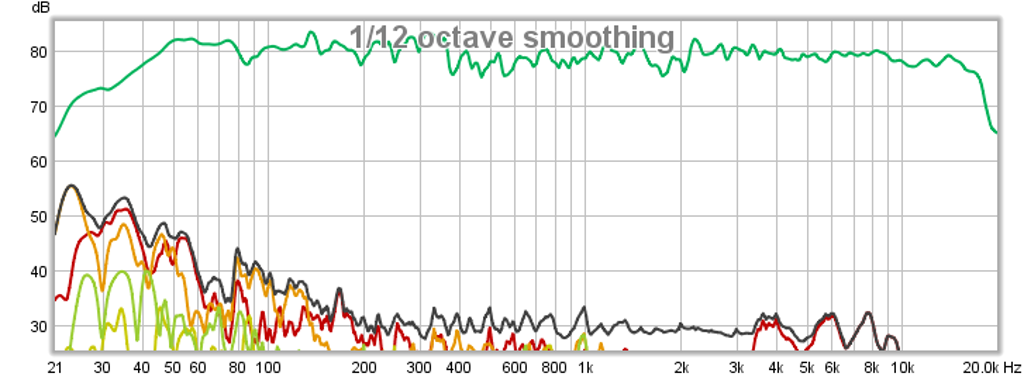
Here it is with subwoofer:

Hey
thanks for the Measurements!
I feel the same
But the detailed hf are a little laid back for my taste.
Can´t beat the price-performance ratio though!
Greetings from Germany
thanks for the Measurements!
The $12 Vifa TC9FD, IMO is the best (at any price) full range driver for smooth response and uniform directivity for 200 Hz to 18 kHz, if you don't mind 85 dB at 2.83v sensitivity.
I feel the same
But the detailed hf are a little laid back for my taste.
Can´t beat the price-performance ratio though!
Greetings from Germany
Sayrum,
Greetings - good to hear from you. There is more about the merits of the Vifa in this thread (now closed): http://www.diyaudio.com/forums/full-range/220084-3-4-driver-very-good-dispersion-high-xmax.html
You are actually the person who got me started with the TC9FD. I have been using it ever since.
Cheers,
X
Greetings - good to hear from you. There is more about the merits of the Vifa in this thread (now closed): http://www.diyaudio.com/forums/full-range/220084-3-4-driver-very-good-dispersion-high-xmax.html
You are actually the person who got me started with the TC9FD. I have been using it ever since.
Cheers,
X
I have not personally listened to the FF85WK or seen detailed polar data posted such as what I did for the TC9FD. I have heard that the FF85WK is an outstanding fullrange mid/tweeter though. Based on price and xmax advantage of the Vifa, I would say that the TC9FD is more bang for the buck. The FF85Wk may have an advantage above 18kHz because it has an aluminum dustcap (or tweeter 'dome'), but I can't hear above 17kHz anyway. I am not sure what the HD values for the FF85WK are but the Vifa is -50dB at typical listening levels of 75 to 85 dB SPL. $48 vs $12 - you can get 4 TC9FD's for the price of one FF85WK.
The cost is so low you might want to try it just to see (or hear).
The cost is so low you might want to try it just to see (or hear).
Yeah, I'm very tempted, and probaly I'll try them in a nautaloss style enclosure; looking at the plot you've posted the nautaloss wins hands down
I'm thinking about a nautaloss with the front baffle extended below to accomodate the woofer in OB
In your replica of my nautilus I've noticed that you connected the woofer without any lowpass filter or I am wrong? In this case the plot can't be considered indicative, better to let run the vifa alone
Talking about baffle vibrations, I can exclude the sand filled baffle, for sure is out of my labor skill to build one in such a shape; whreas a sandwich composed by plywood-rubber-plywood is feasible.
I've considered also a thick aluminum panel glued on the rear, and in this case the shape is not a problem because a friend of mine owns a factory with a laser cutting machine, it's enough to mail him a dwg of the baffle to have the piece done
Anyway I'm going to solve the problem at the root: isolate the woofer from the baffle by magnet mounting
I'm thinking about a nautaloss with the front baffle extended below to accomodate the woofer in OB
In your replica of my nautilus I've noticed that you connected the woofer without any lowpass filter or I am wrong? In this case the plot can't be considered indicative, better to let run the vifa alone
Talking about baffle vibrations, I can exclude the sand filled baffle, for sure is out of my labor skill to build one in such a shape; whreas a sandwich composed by plywood-rubber-plywood is feasible.
I've considered also a thick aluminum panel glued on the rear, and in this case the shape is not a problem because a friend of mine owns a factory with a laser cutting machine, it's enough to mail him a dwg of the baffle to have the piece done
Anyway I'm going to solve the problem at the root: isolate the woofer from the baffle by magnet mounting
Last edited:
- Status
- This old topic is closed. If you want to reopen this topic, contact a moderator using the "Report Post" button.
- Home
- Loudspeakers
- Full Range
- Open baffle Nautilus: the Fibonacci solution to edge diffraction
